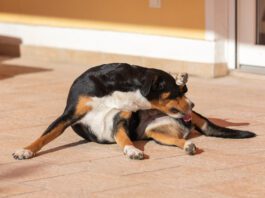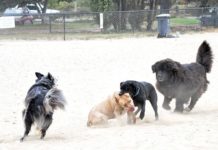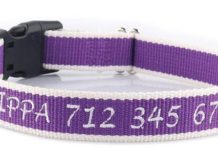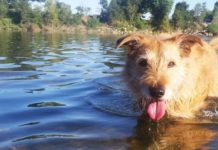Health Insurance for Dogs in 2018
Deductibles range from $50 to $1,000, with possible custom amounts available (you may have to call and talk with an agent). We were impressed with Embraces Healthy Pet Deductible strategy, which reduces your deductible by $50 each year you dont have a claim. When you do have a claim, the deductible resets to the original amount.
Dogs and Children: How to Keep Them Both Safe
Fortunately, there are many things we can do to improve the odds for safe child-dog interactions, beginning with the dog herself. Ideally, every dog should be well socialized with babies and children from puppyhood. Many young adults adopt a pup at a time when children are, if anything, a distant prospect, without seeming to realize that kids could easily arrive within the 10 to 15 years of their dog's lifespan. Even if there will never be children in the dog's immediate family, chances are she will encounter small humans at some point in her life. By convincing her very early on that children are wonderful, you greatly reduce the risk that she will ever feel compelled to bite one.
Suggested Dog Park Rules
The most successful dog parks have rules and people who enforce them. Registration and numbered armbands make it easier to identify rule-breakers, which helps with enforcement. Here are some suggested rules for dog parks, which you should feel free to share with your community.
The Best Pet Steps for Senior Dogs
Older dogs tend to develop mobility issues, whether from arthritis or injury. Many aging dogs will experience increased difficulty getting on and off furniture, in and out of cars, or up and down steps. Quality pet stairs come in many styles and prices. A small stepping stool designed for pets could be just what your senior dog needs to continue living comfortably!
The Pros and Cons of Dog Parks
and even dog fights.
Dog Harness vs Collar: Which is Better?
Dog harnesses vs collars - which is safer? There are many types of collars and harnesses on the market, and some serve specific purposes.
Fitness for Aging Dogs
Many clients bring their aging dogs to me for private sessions because they have started having difficulty or reluctance with or can no longer perform normal life activities like climbing stairs, getting into the car, or walking on smooth flooring. These problems are often related to muscle atrophy in the hind end. Once the dogs get the all-clear from their veterinarian, we work on fitness exercises designed to rebuild hind-end strength; we increase the difficulty of the exercises slowly over time until more function returns.
Grabbing Your Dog’s Collar: Why and How to Practice
Let's take a moment to talk about collar grabs. I see a worrisome number of dogs who duck away when their human reaches for their collar. This is not only annoying for the human, it is also dangerous. Imagine what happens in an emergency, when the owner needs to quickly corral the dog to keep her out of danger, and the dog ducks away from the reaching hand and runs off.
The Safest Types of Dog Collars (and the Most Dangerous)
What type of collar should your dog wear? It depends on your dog, your personal taste, and your training goals, philosophies, and needs. But from our force-free perspective, there are some types of collars we wholeheartedly endorse, some we support with caution, and some that we regard as unnecessary and risky.
Getting Rid of Fleas in the House
The job of getting rid of fleas in your house or yard really consists of taking on both the adults and all the other flea life stages. One could think of the non-adult phases of the flea as another species of pest, given that each stage has differing life needs and vulnerabilities. Because flea eggs, larvae, and pupae all have the potential for turning into fleas, destroying the insects in the non-adult stages is critical to preventing the population from repeatedly bouncing back into your and your dog's lives.
Over-the-Counter Flea Medicine for Dogs
Last month, in Bravecto
Pet Insurance: Thank Goodness I Have It
To paraphrase Forrest Gump, life with dogs is like a box of chocolates; you never know what you are going to get.In early May, my adolescent Pit/Lab-mix, Woody, started coughing and gagging dramatically. It seemed like he had something stuck in his throat, and though I looked in his mouth and throat I couldn't see anything. It called for an immediate trip to the veterinarian.


















